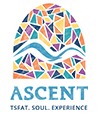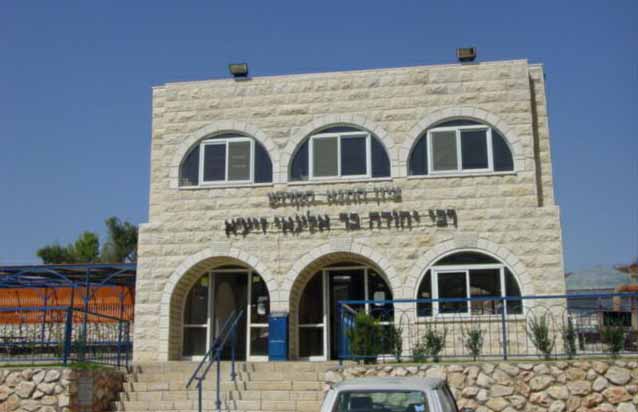“The Law is like Rabbi Yehuda”
by Chana Katz
The two-story building hovering over the burial place of Rabbi Yehuda Bar Illoy is clearly visible on the south (left) side of the Meron-Carmiel- Acco Highway (Route 89) as you leave Tsfat, after about a five minute drive.
Utterly poor in possessions, yet rich in Torah wisdom and sterling character traits, no other Jewish sage has earned quite a prominent position in the Talmud as Rabbi Yehudah Bar Iloi.
One of the five famous last disciples of Rabbi Akiva, Rabbi Yehuda is quoted in the Mishnah more than 600 times. When faced with differing opinions from such illuminous contemporaries as Rabbi Shimon Bar Yochai, it is said that Rabbi Yehudah’s is the deciding opinion.
The poverty which followed the Roman destruction of the Second Holy Temple was deeply oppressive, but the ahavat yisroel (love of a fellow Jew) which arose from those dire circumstances, was recorded for posterity.
Rabbi Yehudah’s students couldn’t even afford to buy their own talleitim (prayer shawls) — and so they shared — huddling six at a time under one shawl.
Once, Rabbi Yehudah’s wife managed to acquire enough money to buy some material in order to sew a cloak, which they both lovingly shared. He wore it to the House of Study and his wife donned it when she went to town.
He endured his poverty with grace. Once, upon hearing that Rabbi Yehudah couldn’t even afford to have his own cloak, the famed teacher Rabban Shimon ben Gamliel sent him one. Rabbi Yehudah refused to accept it.
A more humorous aspect of the difficult times involved the sharing of one bowl of food between Rabbi Yehudah and another scholar with only one spoon between them: “How long do I have to have your gritty fingernails dipping into the bowl of food which I eat?” asked one. “How long do I have to accommodate the spittle from your spoon!” responded the other.
While he reached great heights of Torah learning — tutored in part by his father, a student of Rabbi Tarfon and Rabbi Eliezer B. Hyrcanus — there was no work that was too meager for him to perform. “Work honors the worker,” held Rabbi Yehudah.
In a similar vein, Rabbi Yehudah knew nothing more dear than learning the Torah — except “working,” that is — living — the Torah. Leaving the study hall to gladden a bride and groom or to pay respects to the departed at a funeral. . . taking time to help a quarreling husband and wife…were duties higher than learning itself. “For so you show your fellow man love and honor,” Rabbi Yehudah explained.
Rabbi Yehudah is quoted in Pirkei Avos (Ethics of Our Fathers) urging students to be “meticulous in study — for a careless misinterpretation is considered tantamount to a willful transgression.”
He also said that man is recognized “through his anger, his cup, and his pocket — how he behaves when he drinks too much, how generous he is with money and how quick to anger.”
Today — some 1800 years since the light of Rabbi Yehudah and his students shone in the ancient village of Ein Zeitim on the outskirts of Tsfat — a kollel for learning has been established in a two-story building above the tombs of Rabbi Yehudah and his father.
A large patio with a pavilion and tables adjoins the site to accommodate the many festive occasions which take place there such as weddings and bar mitzvah celebrations.
Interestingly, part of the money to fund some of these projects came from a once-wealthy Israeli man who had lost most of his fortune. The man was directed to the tomb to pray for a restored sustenance and promised that if his fortunes indeed were reversed he would support the maintenance of the gravesite.
Tsfat Chief Sephardic Rabbi, Shmuel Eliyahu, shlita, said he’s not only heard of many stories surrounding those who come to pray at Rabbi Yehudah’s grave — but has witnesses many, many such stories himself.
One such story involved a worker at the gravesite, a man in his early thirties who remained childless. Upon seeing Rabbi Eliyahu at the tomb, the worker beseeched him to pray for him to have children. Rabbi Eliyahu told the worker that his own prayers would carry more weight.
But alas, the worker, bedecked with earrings and other modernities, was at a loss to understand how his prayers could possibly be answered. He refused to pray and insisted that Rabbi Eliyahu pray for him. And so the Chief Rabbi obliged — but the man remained childless.
Some years after that, the worker’s sister celebrated a brit milah and invited her brother to be the sandek. Again, the man refused, claiming he was too far away from the Torah to accept such a position of honor. But the sister would not take no for an answer.
And so the man went to Lake Kinneret and immersed in its waters as a “mikveh” (ritual bath) to prepare for the honoring of holding the newborn baby on his lap. He also bought a pair of tefillin and not too long after that went back to the tomb of Rabbi Yehudah and this time, by himself, prayed that he and his wife could be blessed with a child.
Nine months later, Rabbi Eliyahu said, he was invited to that couple’s brit milah.
If you wish to take a taxi to the tombsite from Tsfat, the seven kilometer ride costs about 25 Israeli shekels. Egged bus #361, which leaves from the main Tsfat bus station every half hour, is cheaper – 7.3 shekels according to today’s fares. However, the bus does not stop directly in front of the kever — its closest stop to Rabbi Yehudah is at the Ein Zeitin Junction, which will give the visitor about a two kilometer backtrack. The site may also be reached on foot from Tsfat in less than an hour via a pleasant walk on the dirt path that emerges from the back of the marble factory on Ari Road just before the cemetery (in the old days, this was the main entrance to Tsfat!) .
The site has undergone major renovations since the time when the Holy Ari of Tsfat described its location in his famed book, Sefer HaGilgulim. The Ari also noted that Rabbi Yehuda’s father was buried within close proximity.
About 40 years ago, stairs were built leading down a small underground cave where the tombs were embedded. Within the past decade, the pavilion and two-story center to accomodate visitors and the kollel were also added.
The gravesite of Rabbi Yehudah is also said to be one of two sites in the Galilee — the other being the gravesite of Rabbi Tarfon — at which soap made from remains of Jews murdered in the Holocaust were brought to be buried and find rest.
Chana Katz, a former South Florida journalist, lives in Tsfat. Her articles on life in Israel have appeared in publications throughout the world.

